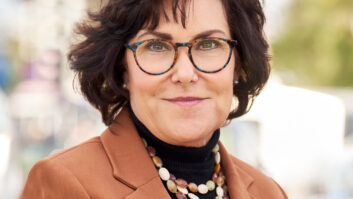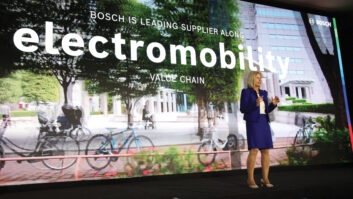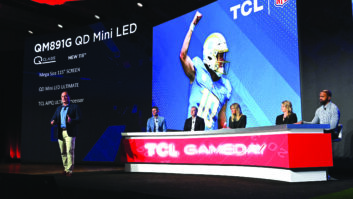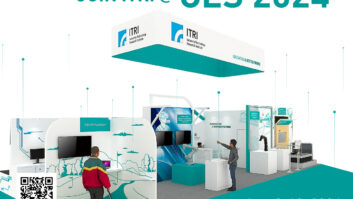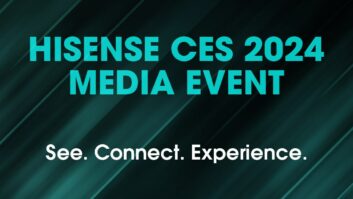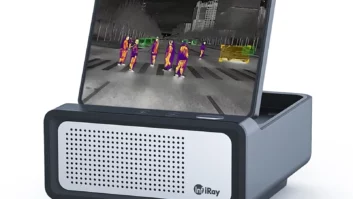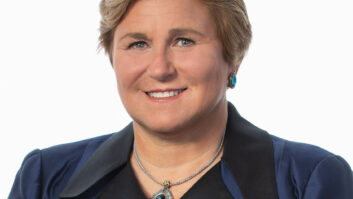LAS VEGAS – Joe Taylor, Panasonic Corp. of North America
chairman/CEO, outlined his company’s strategy to expand its role in electronics
beyond the A/V business in the near future.
In a one-on-one interview with the Official CES Daily, Taylor was
candid about Panasonic’s plans in CE and B-to-B markets and on industry
profitability.

Panasonic North America is projected to make a profit by the end
of the fiscal year, ended March 31. But it will happen with CE sales being
lower, but with higher sales on its B-to-B side.
Here is part of the conversation we had with Taylor at
Panasonic’s booth yesterday.
How much of your business
is consumer vs. B-to-B now, and where will it be in the future?
Taylor:
Globally,
consumer sales are 50 percent of our revenue. In North America we were close to
that in revenue five years ago, and that was without major appliances. Today
that ratio is significantly less [in CE] due to our focus on the B-to-B
business.
What does that mean
for Panasonic’s consumer business in North America?
That does not imply that we are walking away from the CE
business, but sales there will lessen as we go into the near future. Also, we
have no intention of bringing home appliances into the U.S. at this time [as
announced in Japan late last year]. There is no timeline. Those products [for
Japan] are smaller than what would be needed in the U.S. and higher priced.
Focus in the short term – the next two to three years – will
be with the B-to-B side and then come back to [with an emphasis] the consumer
side.
Will those new
categories include health care, home energy management and others like them?
Taylor:
Initially,
we have to make an investment in Cloud-based initiatives. One of them is health
care to have doctors and hospitals interact [via the cloud] with consumers at
home … to monitor such conditions as diabetes or congestive heart failure, for
example. Monitoring patients at home and doing preventive medicine will reduce
health care costs.
How do you calm fears
on the part of retailers who think you are backing out of the CE business?
Taylor:
The
message we are trying to communicate is that we are not walking away or
deemphasizing CE. Our core DNA as a company is in CE. Because of technology we
developed on the B-to-B side we have more technology in CE. But we must be
smarter in CE and not sell product that do not have value.
The customer has told us what they don’t find value in. We
will be in the TV business, but that doesn’t have to make all the components.
We can source them less expensively.
How we reduce what we
make? All the SKUs we make are no longer realistic for us. You will see in 2011
a reduced portfolio of TVs, reduction of our SKUs in smaller plasma sizes,
expansion in larger plasma and an expansion in LCD. Ninety percent of our line
will feature 3D, 94 percent will feature smart TVs. We want profitable growth
from value-added products.
Are you concerned
about the introduction of Apple TV?
Taylor:
No, I
welcome it. I’m interested in whatever they do in TV. If they introduce
something that they beat us, good for them and shame on us. The industry does
need a shot in the arm. But it may turn out that we are already ahead of them
and they might have to catch up to us.
How can manufacturers
take control of MAP pricing? Offer different lines to different retail
channels? Open boutiques within stores? Open your own stores?
Taylor:
They are
all valid points but represent a larger issue – there is a gap between
consumers, retailers and manufacturers. And the gap concerns me the most the
manufacturer and the retailer … sense that we are not in this together. When
you talk MAP, what is the relationship between retailers and the manufacturer?
We have no intention to open up stores. Unless your name is Apple,
it is crazy. But we do need to have a relationship with the ultimate customer,
the consumer.
In the past five to seven years manufacturers feel all the
industry’s problems were dumped on them. Retailers feel the same way. But if
every TV manufacturer loses money there will be fewer manufacturers around and
far less innovation.
We have plans over the years on how Panasonic will address
our issue. We closed three TV factories, and we intend to make money on
everything we sell. Make sure our partners are in sync with that. We want it to
be clearly understood that we want to make a profit and it is not one-sided. We
want our retail partners to make money.
I am pleased as we go into this new model year that meetings
with our main retail partners that there is a real sense an understanding of
this. But there is a long way to go.
Some retailers
complain that Panasonic has undercut its own MAP pricing on your sales site
online. Has that happened?
Taylor:
Our web
sales, though improved with a new web site, are insignificant. If, and I mean
if
, a price of Panasonic product
is lower by one day, is it affecting a retailer’s business? Our sales are 99.9
percent from our channel partners. Is the 0.1 percent affecting their business?
I don’t think so.
We want our sell more products and make a profit, and we
want our retail partners to sell more and make a profit, and have consumers get
excited because they have bought our products.






